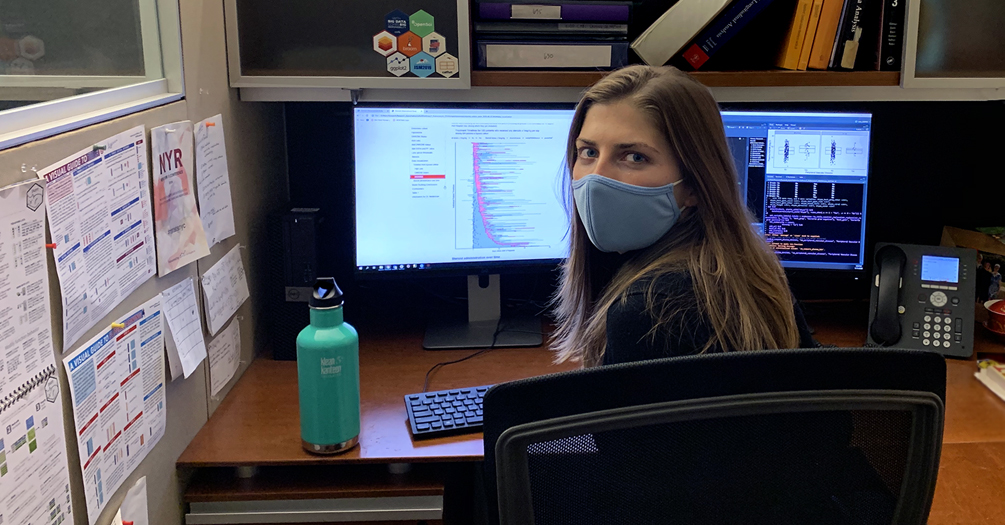What is Biostatistics?
Biostatistics bridges the gap between living organisms and quantifiable data. It is the process of analyzing health and biological data. Biostatisticians are crucial in clinical trials, epidemiology and public health. In clinical trials, Biostatisticians analyze the trial participant’s data. In epidemiology and public health, the study of the exact way in which living things are affected helps to form a picture of what has occurred as well as what may occur in the future. This influences how policymakers decide what actions should be taken to help a population.
What is Predictive Modelling in Biostatistics?
A critical part of Biostatistics in public health is predictive modelling. This is a statistical process where future events can be predicted using existing data to find patterns and trends. This can be seen in epidemiology, but also screening for individuals who are more likely to be at risk for certain diseases. For diseases like breast cancer, data including age, race, number of relatives who have had breast cancer and other indicators are used to determine if a person should visit their doctor for next steps in prevention or treatment. Breast cancer is a leading cause of death for women around the world, and predictive modelling is helping to prevent deaths by assessing breast cancer risk. Predictive modelling is not limited to cancer and pandemics, but can be used across a multitude of different public health concerns.
As simple as the idea of using data to form conclusions may sound, it is a complex process that begins with determining what data should be collected. Biostatisticians and those at BioPharma Services., use their knowledge of both biology and statistics to help researchers establish what kind of information needs to be gathered to optimize an analysis. Too many kinds of data cannot be properly analyzed at once. A knowledge of biostatistics will establish the proper quantity of data that preserves the quality of the statistical findings.
Clinical Trials and Public Health
Human Clinical trials are performed for a variety of reasons. From the effect certain foods may have on a medication to how a medication may affect people of different ages and genders. The conclusions drawn from different kinds of trials will affect the policies and suggestions public health officials make.
Public health works to prevent serious diseases, including cancer and diabetes, but recognizes that prevention can only go so far and the treatment and care of sick individuals is also their responsibility. The development and improvement of medications for diseases like cancer and diabetes will enhance the lives of those with the disease and aid public health in helping those affected.
Clinical trials are crucial in drug development and are therefore integral in the overall health of communities. The goal of public health organizations is to take informed actions to help the population. Improving the quality of medications available to the public through clinical trials is necessary for this goal.
Clinical Biostatistics is used in clinical trials to analyze and interpret the raw data generated by the test subjects. The biostatisticians will determine what kind of statistics should be used based on the kind of study and will execute the analysis in a way that is compliant with the standards of the necessary associations. Therefore, connecting the medical portion of a clinical trial to the final scientific findings. These scientific findings can then be used by public health services to recommend the best course of treatment for sick individuals.
Biostatistics for Clinical Trials
Biostatisticians implement their knowledge of mathematics, statistics and biology to guide clinical trials to an accurate and thorough conclusion. Without a sense of the context of the data being analyzed as well as the skills to conduct the analysis, the clinical trial would be disconnected. There would be no bridge between the medical portion and the quantifiable results of the trial.
A statistical analysis of clinical data is needed for the outcome of a clinical trial to be understood. In order for the type of analysis chosen to be appropriate for the kind of trial, the statistician must have a complete understanding of the biology behind the clinical trial. The combination of the two disciplines is what determines the sheer significance of biostatistics in public health. The importance of biostatistics in clinical trials, and therefore other areas like public health, cannot be understated.
How Biostatistics In Public Health Inform the Guidance of Experts During Disease Outbreaks
In essence, the statistical method is used to explain and predict some of the health outcomes and the direction of epidemics and pandemics, and it definitely influences decision-makers in public health. Those who are working on, proposing and advising the mitigation strategies in response to contagions use biostatistics data and results to guide public health and other healthcare practitioners on how to go about controlling these diseases. Two good examples would be studies that were designed to determine the effectiveness of mask-wearing as a measure to prevent the spread of certain viruses, as well as clinical trials designed to test the effectiveness and efficacy of vaccines, including those developed for the prevention of SARS-CoV-2.
Data Collection and Interpretation
When we talk about biostatistics in public health or any other application, the most important thing to keep in mind is that they are good only if the study or the design for data collection is appropriate and carefully planned. Then, we can extrapolate results and further interpret them.
Most research studies are based on samples, which represent populations. Selecting that sample to be as representative as possible of the population and the condition that we intend to study is very important for accurate generalization of the results and for the design of appropriate interventions. On the other hand, epidemiologic measures, such as morbidity, mortality, or incidence and prevalence rates, are based on every case and are used to assess and inform us about the health status of a population.
All research in public health and health sciences is and should be based on scientific methodology and planning. How do we plan and structure the data collection, data analysis, and interpretation of the findings, as well as the application of those findings? Biostats are truly valuable in emergencies, when connecting the reality of panic and uncertainty with the strength of the scientific method to provide solutions.






